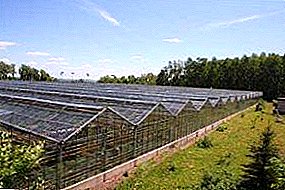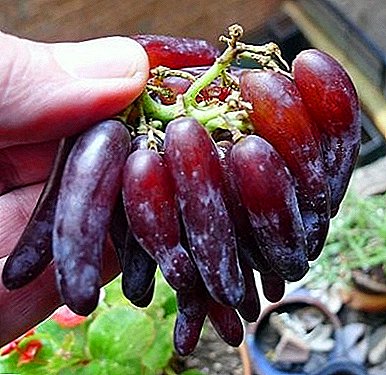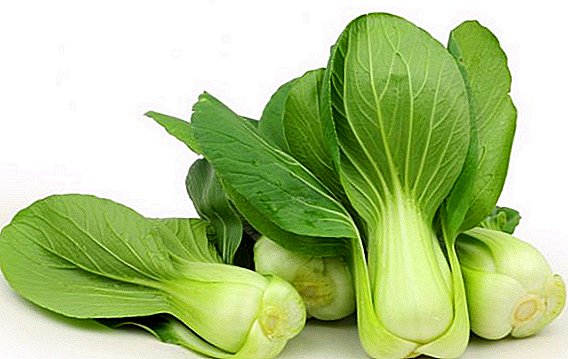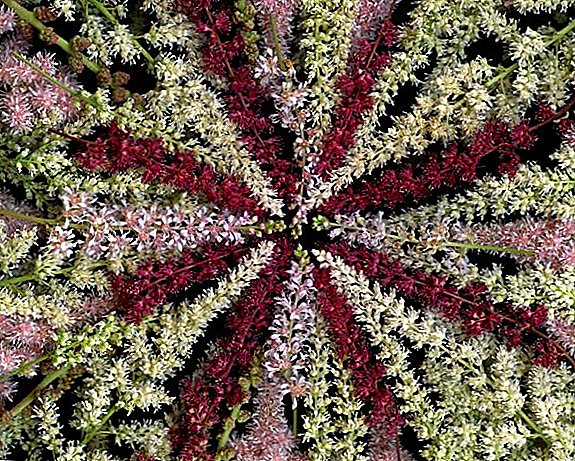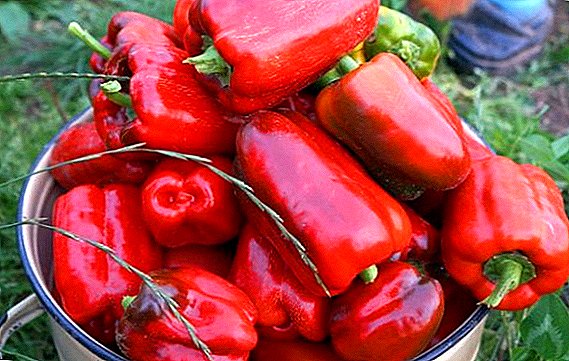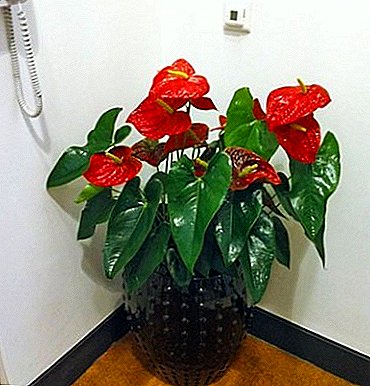
"Wild" anthuriums in the humid mountain rainforests settle on trees and, one may say, nest on rocks, in hollows with a handful of soil there.
Therefore, their root system has its own specifics.
These roots go to the ground, being satisfied with its relatively small amount - but they also master the airspace.
Based on these features, pick up the container, the soil and the method of planting anthurium.
Landing container
The tank should ensure the equality of soil temperature and ambient air. For this reason, choose plastic containers.
In the bottom must have drainage hole Sufficient size so that the moisture does not stagnate.
Deep containers are not suitable for roots growing more likely to the sides and even upwards, outwards.
On the other hand, the width of the tank depends on what is expected from the anthurium: in wider pots the root system will develop and numerous children will appear, but the flowering will decrease dramatically. How to make it bloom, you will learn here.
In too wide pots, the plant will not be able to quickly master the soil and pathogenic processes will take place in it.
As a result, for adult anthuriums choose low plastic containers with with a diameter from 24 to 32 cm.
Priming

General characteristics of optimal soil for the plant: loose, fibrous, with very good air and moisture permeability, slightly acid.
Such are ready soils for orchids and bromeliads, as well as for aroid ones.
Similar soil mixes can be prepared. by myself.
- Here are some suitable formulations:
- leaf (sod) soil, sphagnum moss or peat in equal proportions with the addition of pieces of charcoal and coconut fiber;
- peat, chopped sphagnum, sod land in the ratio of 2: 2: 1;
- leaf earth, peat, coarse sand in the proportion of 2: 2: 1 with pieces of charcoal and bark of coniferous trees;
- sheet with coarse fibers, chopped sphagnum, light turf ground (2: 1: 1 ratio) with a small amount of bone meal;
- fine expanded clay, fibrous peat, pine bark in equal quantities.
Landing
Before landing at the bottom of the container must be laid drainage (expanded clay, small pebbles, brick battle with pieces of charcoal), a layer of which takes up to a third of the pot volume.
Coarse sand can be poured over the drainage layer, and then the root system can be placed - better with earth lump.
Special attention should be paid to the condition easy breaking roots and carefully remove damaged and tainted areas, sprinkling the injured areas with crushed charcoal.
You can also treat them with a root formation stimulator.
Then fill the prepared soil mixture, trying slightly deepen young surface rootsand gently seal it. Aerial rootsRemaining on the surface should be covered with sphagnum and regularly moistened.
Most often when planting you need to take care of plant support.
Transfer

If the anthurium is grown from seeds, it is transplanted into a separate pot with a diameter of 7 to 9 cm. in the spring at the stage of five to six leaves and in the future they change the "apartment" annually, as they grow. About what other ways, except for seeds, propagate this plant, read here.
Mature plants are transplanted every two to three years. When transplanting, they try to deepen the surface roots a bit more than it did in the old pot. The remaining part of the roots on the surface is wrapped in moist sphagnum. Several increase and drainage layer.
During the flowering transplant is not carried out.
The diameter of the new pot determines whether the plant will bloom predominantly or mainly grow. If you mean bloomThe anthurium is transplanted into a pot, not much larger than the previous one.
In a wide pot, anthurium eagerly grows, giving stem shoots. In spring, when these offspring have already formed their roots, during transplantation they are separated from the main plant and seated in separate containers corresponding to their development.
After the purchase A new instance should carefully inspect the soil and container. If this shipping pot and anthurium were grown hydroponically, the plant should be completely freed from the soil and immediately transplanted.
In any case, you need to monitor the preservation of the root system and, if possible, improve it with parallel treatment with charcoal powder and a root formation stimulator.
Each transplant is a stress for the plant. Therefore, from the "settlers" should not expect immediate abundant flowering or luxuriant growth in all directions. It is only necessary to provide them with optimal conditions for development and to give time for adaptation to the new “nest”.
Anthurium, he is the flower of "male happiness", is rather complicated in room culture, however, he can also create suitable conditions.
One of the main tasks in this case is to ensure the development of the root system.
Put it in a favorable environment, add watering, lighting, temperature, humidity - and "male happiness" will grow, bloom and multiply.
A photo
Next you will see a photo of care at home for Anthurium, as well as which pot is needed for it:




- Types of Anthurium:
- Anthurium Scherzer
- Anthurium Crystal
- Anthurium Andre
- Care Tips:
- Everything about Anthurium
- Reproduction of Anthurium
- Blooming Anthurium
- Anthurium Diseases



